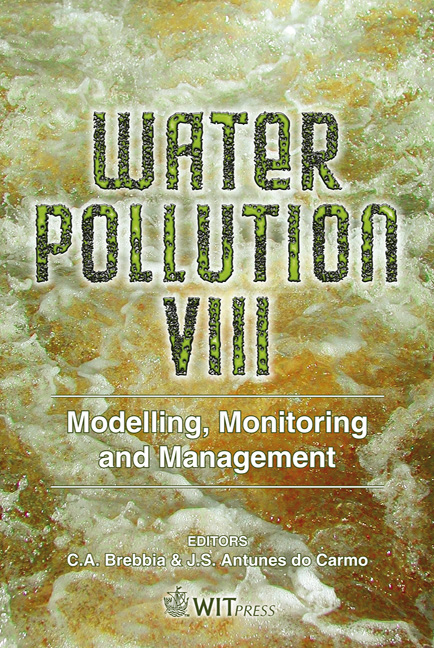Advanced Oxidation Of Photographic Processing Effluents On Novel Heterogeneous Fibrous Catalyst
Price
Free (open access)
Transaction
Volume
95
Pages
10
Published
2006
Size
305 kb
Paper DOI
10.2495/WP060531
Copyright
WIT Press
Author(s)
V. V. Ishtchenko, K. D. Huddersman & Z. Yang
Abstract
A novel heterogeneous catalyst, based on Fenton’s chemistry, was evaluated for the treatment of KODAK Silver Bearing (SB) photographic processing effluents with high Chemical Oxygen Demand (COD) value. The effect of temperature, the nature and concentration of the oxidant (air and/or hydrogen peroxide), the duration of catalytic treatment and the dilution factor of the effluent on the reduction in COD were investigated. The catalyst and bubbled air (with no hydrogen peroxide present) resulted in a significant COD reduction of the effluent of 56 % after 18 hours of treatment at room temperature. It was found that most of the COD reduction occurred within the first four hours of treatment. Using air on its own, as oxidant was found to be sufficient, with only a slight improvement on the addition of hydrogen peroxide. Ambient temperature was preferred for the catalytic treatment of the effluent, as an increase in temperature up to 600C led to less COD reduction which may arise from a change in the redox potential of the active transition metal (Fe3+) complex or to the formation of recalcitrant products. Keywords: Advanced oxidation, photographic processing effluents, heterogeneous catalyst, Fenton’s chemistry. 1 Introduction The treatment of wastewater is one of the most important subjects in the area of pollution control. In the monitoring and control of wastewaters, including trade complex effluents, such as photographic processing effluents (PPE), chemical oxygen demand (COD) is used as a measure of the extent of pollution as it is the
Keywords
Advanced oxidation, photographic processing effluents, heterogeneous catalyst, Fenton’s chemistry.





